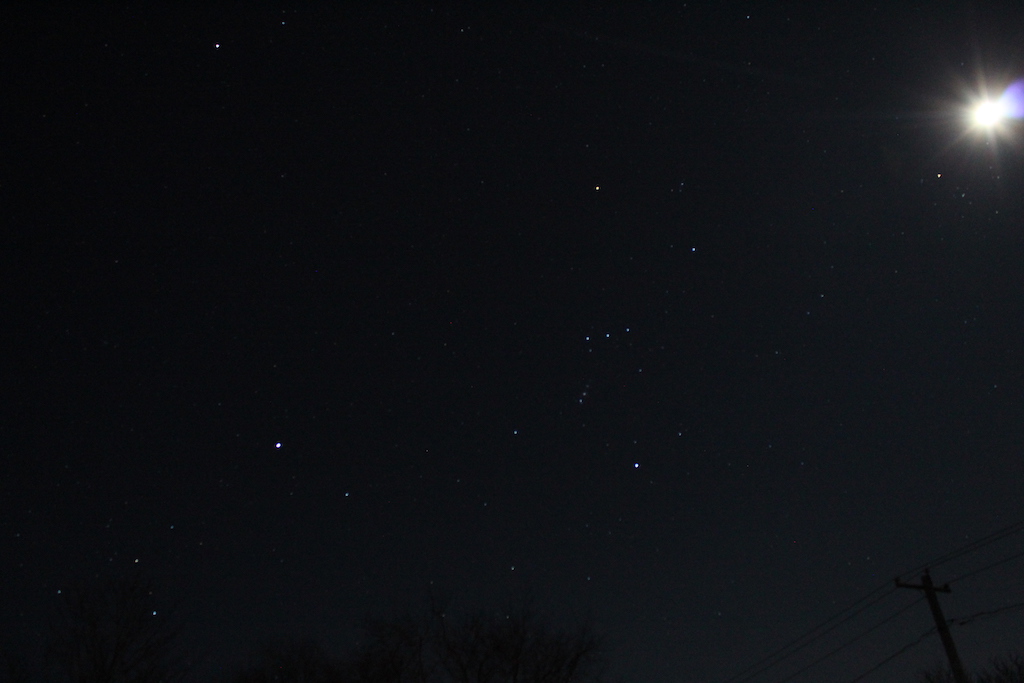The Story of Orion

I took some quick and easy shots on a cold and gusty Long Island winter night at the Custer Institute last month. Custer is Long Island’s oldest public observatory and it’s open every Saturday night. I wanted to capture the great constellation Orion hovering over the observatory’s dome. Orion the Hunter is seen with his ever-faithful companion the dog or Canis Major, whom we also call “Sirius.”
I included Orion’s lover in one of the pictures, Diana (sometimes known as Selena), whom we call “the Moon.” Here she is shining brightly and over-exposed.

Here’s one of my favorite stories of the giant from the book, Romance of Astronomy, by Florence Armstrong Grondal— let’s call it a belated Valentine’s tale, which involves the moon-goddess and her brother, Apollo, the Sun god:
Apollo was annoyed with his sister and her love for the great hunter, Orion. There came a moment when Orion was swimming in the sea. Apollo devised a trick to play on his moon-goddess sister, Diana. By pouring golden rays on Orion so that the brightness would conceal him, Apollo persuaded Diana to try her skill by aiming an arrow at the shining object out in the ocean.
Diana aimed, and seeing as she never missed, hit her target. Orion tossed in the water to his death. The goddess soon recognizing her wounded lover in his agony and wept bitterly.
She begged Jupiter to place the hunter among the stars so that she would always see him when she carried the Moon across the sky.

Canis Major was Orion’s ever-faithful hunting dog. One of its bright stars, Sirius, is known as the dog-star. It is the brightest star in Earth’s night sky. Sirius was revered by the Egyptians as a god, but hated by the Greeks for bringing the dog days of summer. At midsummer, the dog-star rises with the Sun, and it was thought that the combined heat of Sirius and the Sun could scorch the Earth.

Sirius seems to beckon us to come across interstellar space for a visit. The Dogon tribe in Africa thought they had contact with a Sirius civilization long ago. I have always imagined what an amazing sight it would be to see it from an Earth-like planet, orbiting a blue sun in a blue sky, overseeing perhaps another blue world. Maybe instead of green vegetation, could it be instead blue? A world called Azure, whose moon is blue too.





